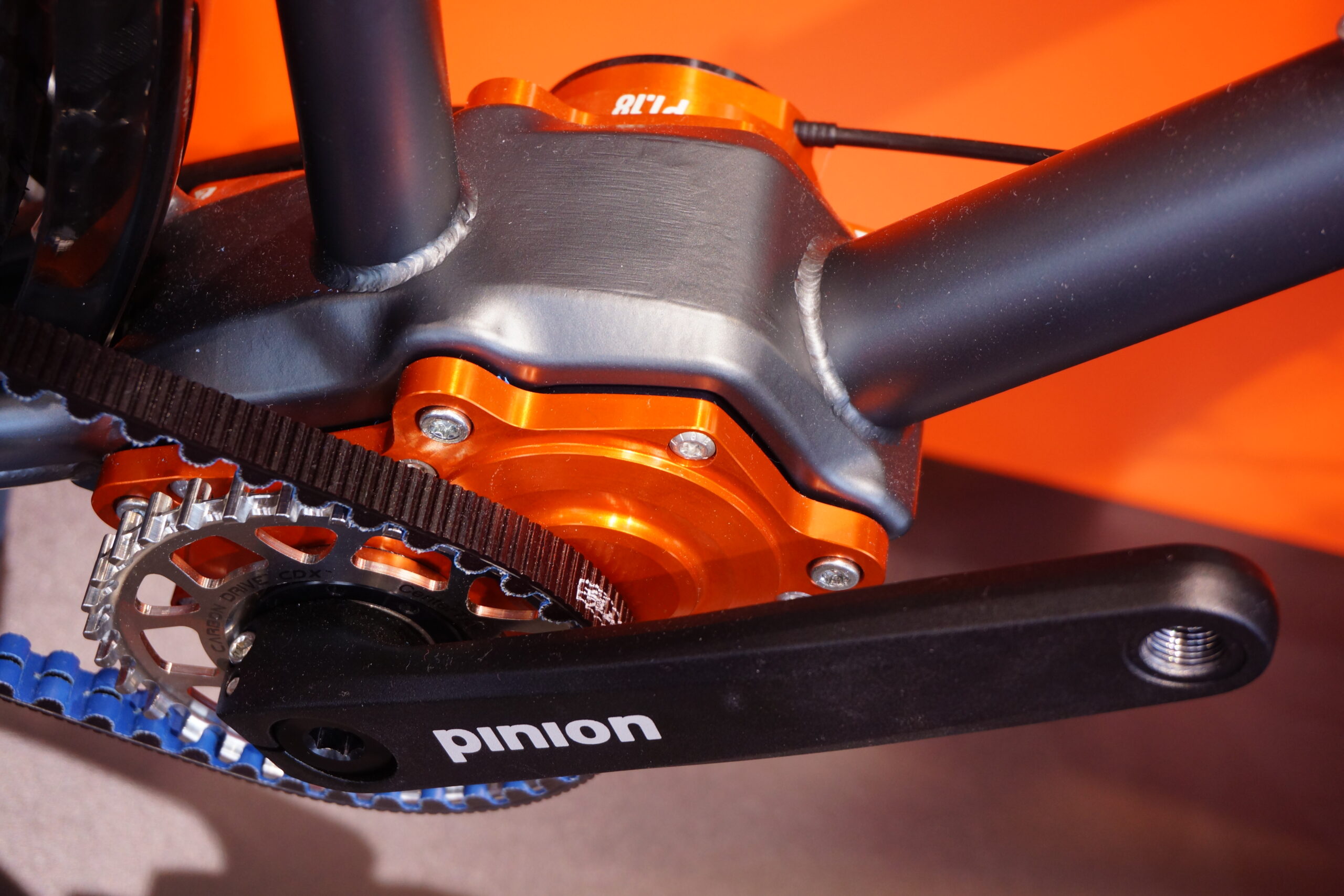One of the more curious component developments at Eurobike this year of interest to touring gear nerds was the Pinion internal gearing system.
Pinion — or so I was told by one of the bike manufacturers who’ve incorporated the system into new bike models this year — was developed by a group of breakaway engineers from Mercedes Benz, which some might say is a big hint that even at this early stage the gearbox deserves to be taken seriously.
Internal gearing systems are nothing new, of course. High-end world touring bikes have been built around the Rohloff Speedhub for many years, and it’s now as good as proven in the long haul if you can afford the £1000 jump in the price tag of a bike thus equipped.
Shimano and SRAM, among others, have brought out more domestic-level internally geared hubs, but nothing yet has come close to the Rohloff in terms of gearing range and proven longevity.
Pinion appears to be a direct attempt to shift this monopoly. With a similar price tag, the P1.18 18-speed unit outclasses the 14-speed Rohloff on paper, with more gears in a wider range, as well as the equally-spaced gear intervals, single twist-operated handlebar shifter, and maintenance-free operation already familiar to Rohloff users.
The major difference between Pinion and previous attempts at internal gearing is that the unit is mounted in the position usually occupied by a bicycle’s bottom bracket. The cranks remain where you’d expect them to be, but they don’t drive the single chainring directly, instead feeding the internal transmission, which then drives the chainring and chain (or belt-drive system) that transfers power to a single sprocket on the rear wheel.
According to Pinion, this arrangement centralises the bike’s centre of gravity better than the rear-hub-based systems, makes replacement or removal of the gearbox easier, and allows the rear wheel to be treated as a separate component for the purposes of maintenance.
On the other hand, it does mean that bicycle frame designers are having to make a rather radical departure from traditional bottom bracket shells, or even eccentric units: this part of the frame must be specifically redesigned and constructed to accept the Pinion unit, and there’s no chance of putting in a standard bottom bracket if things go wrong.
That several high-profile touring bike manufacturers — including Koga, Tout Terrain, VSF and KTM — have taken the leap on the back of such young technology is a strong indicator that Pinion is already being taken seriously by the industry.
Here’s Koga’s new Pinion-equipped World Traveller (RRP 5,283 EUR):
And VSF Fahrradmanufaktur’s TX-1200 (RRP 3,299 EUR):
As well as KTM’s Life Locanto P1.18 mentioned yesterday (RRP : 3,399 EUR):
It will undoubtedly be many years before the units are sufficiently road-proven to be hailed as true Rohloff-usurpers, but nothing else — to my knowledge — has come even this close to earning such a title.
It’ll be interesting (for the geeks, at least) to see how Pinion gets on when it’s taken off on an extended global jaunt. Anyone fancy being first?










Something to add?